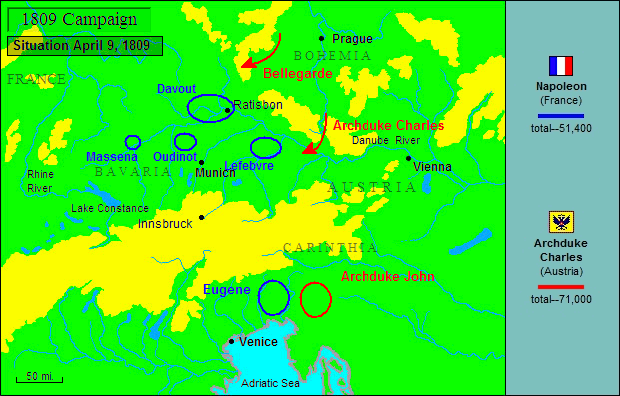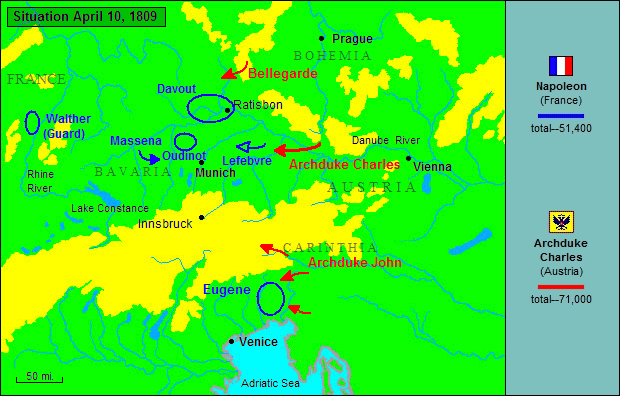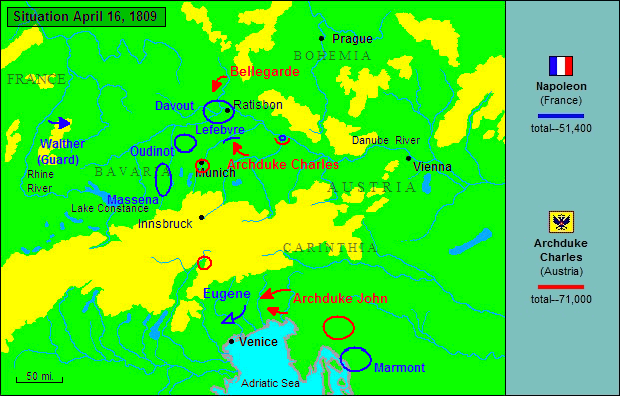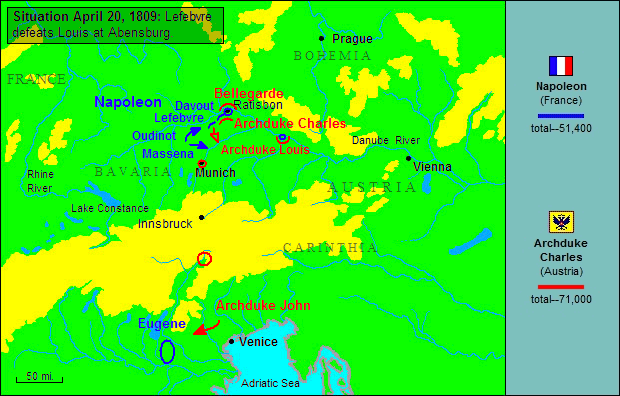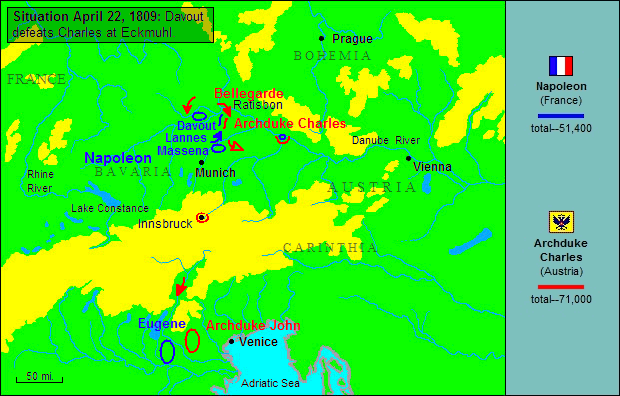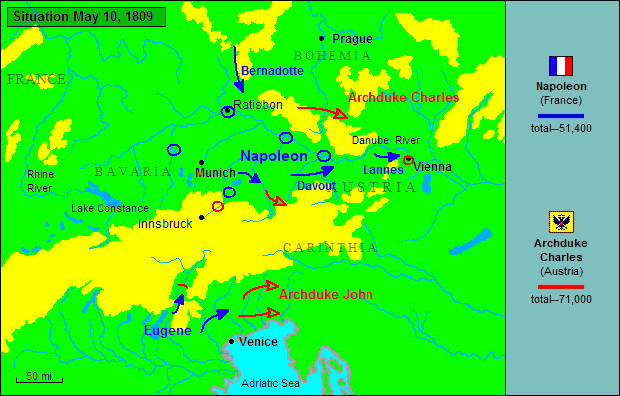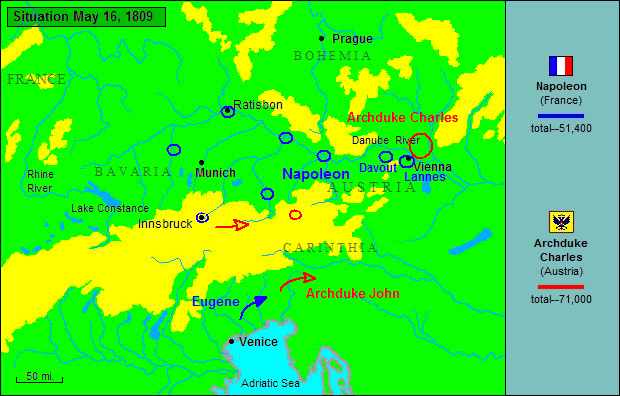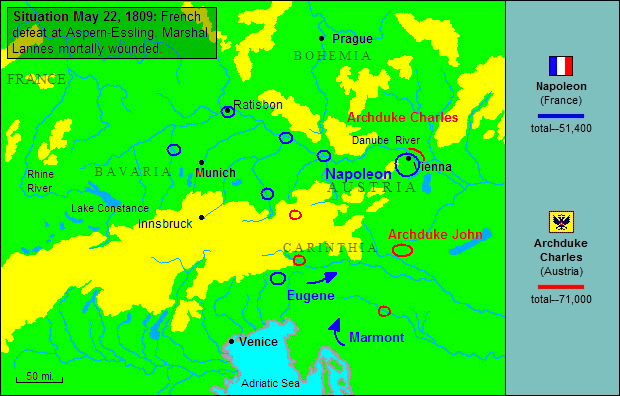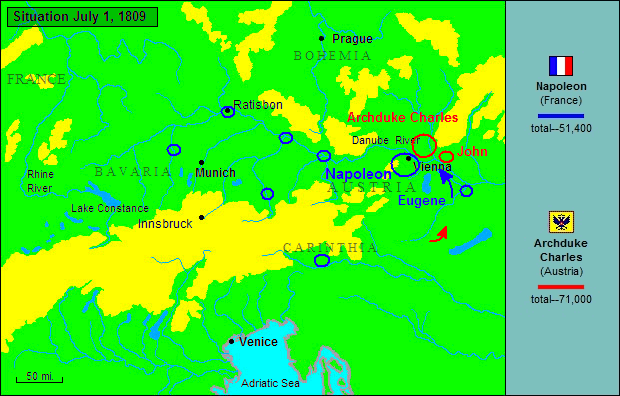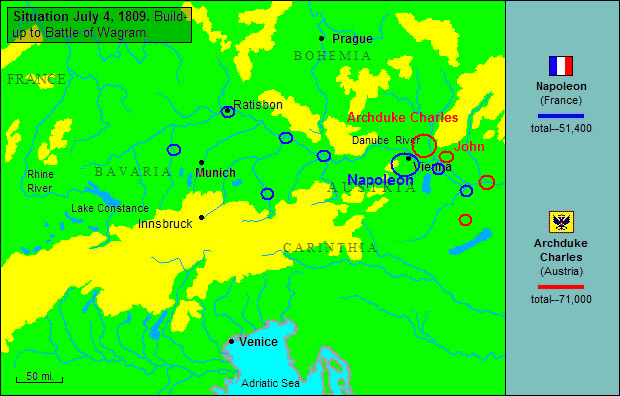If, upon his return to Paris in January 1809, Napoleon could take some comfort in the fact that much of Spain was back under French control, he cannot have been entirely happy with his decision to invade in the first place. Ever since the uprising of Dos de Mayo, the country had been in open revolt, creating a persistent drain on the resources of the French Empire and giving the lie to his role as liberator of Europe. Clearly, he had misread the situation, and no amount of scorn for Spanish backwardness could rectify his error. Where once he could count on a docile, if grudging, ally in the person of Spain’s Bourbon king, he had managed to create a fierce and intractable enemy in the Spanish people themselves. And what was worse, the political implications of the error were not confined to Spain; the depth and virulence of the Spanish resistance would hardly go unnoticed in the rest of Europe, giving his enemies new hope that the power of French arms might yet be broken.
Indeed, while Napoleon was busy staunching the open wound that was Spain, the Austrians were preparing to strike his eastern flank. The Austrian casus belli was not far to seek. Over the past twelve years, the country had suffered repeated, humiliating defeats at the hands of the French and been compelled to give up much territory and prestige. Inherently threatened by the liberal ideals of the French Revolution, Austria’s Hapsburg emperor, Francis I, had seen many of his fellow monarchs replaced by members of the Bonaparte dynasty and had little reason to expect that a similar fate did not await him as well. Indeed, his motives were so palpably obvious that when, in April 1809, a large Austrian army marched into Bavaria, the invaders did not even bother to issue the traditional declaration of war. Instead, in a clear reference to the example of Spain, the Austrian commander, Archduke Charles, called upon the German people to rise up against their French oppressors.
While Austria’s reasons for going to war were perfectly clear, the circumstances in which a member of the Austrian royal house might appeal to the cause of German nationalism were not. In addition to Germans, the Austrian Empire included Czechs, Poles, and Slavs, for whom such an appeal must have seemed more than a little curious. As for the Bavarians, now citizens of the French-dominated Confederation of the Rhine, the Austrian call to arms was altogether underwhelming. For the most part content with their new status (contentment that would not last long, to be sure), they would fight on behalf of the French. This left the Austrians with very little in the way of useful support. Among their traditional allies, England could only lend encouragement from the sidelines, and Russia–now nominally allied to France–would remain a curious though largely ambivalent spectator.
Forced to prosecute the war on their own, the Austrian commanders planned a swift, well-coordinated advance in hopes of catching the French off guard and defeating them before the bulk of their forces could be summoned from Spain. Speed and coordination had scarcely been hallmarks of Austria’s previous war efforts, however, and from the first, the campaign was hampered by delays. Originally scheduled to step off on 12 March 1809, the advance did not get underway until 9 April, by which time Napoleon had mobilized his existing troops in Germany and begun assembling additional forces to move in support. Even so, the Austrians enjoyed an early advantage, and by the evening of the 10th, a total of six corps under Archduke Charles had crossed south of the Danube and were proceeding westward, their forwardmost units coming to rest on the west bank of the Inn River. With this massive force, the Austrian commander planned to push the French out of Bavaria while two more corps under General Bellegarde advanced southward from Bohemia in a massive pincer movement. At the same time, another Austrian army under Archduke John was to push into northern Italy to confront Napoleon’s son-in-law, Prince Eugene.
Napoleon, meanwhile, was in Paris assembling fresh conscripts, and as the enemy’s intentions began to take shape he ordered his two forwardmost corps commanders, Davout and Lefebvre, to establish a defensive line running from Ratisbon to the upper Isar River. Delays in the transmission of messages between the capital and the front led to considerable confusion, however, and on the 11th Davout’s corps–under orders from the chief of staff, Berthier–withdrew from Ratisbon to Ingolstadt only to be told to return again two days later. It was not the Grand Army’s finest hour, and with Bellegarde closing in on Ratisbon from the north and Charles from the south, a coherent plan of action was sorely needed. On the 16th the Austrians met and drove off a French delaying force at Landshut, at which point they were within a day’s march of the upper Danube and a chance to bottle up the greater part of the French forces.
Upon Napoleon’s arrival at the front on the 18th, uncertain of the enemy’s intentions or precise whereabouts, his first concern was to concentrate his own far-flung units. Thus he ordered Davout to link up with Lefebvre’s corps in the vicinity of Abensburg, specifying that Davout withdraw through a narrow defile between the villages of Abbach and Saal, where the road passed within a mile of the river. Here, if the Austrians moved quickly, they stood a good chance of falling on the French flank and driving Davout’s troops into the Danube under much the same circumstances in which Hannibal had destroyed Flaminius’ legions on the shores of Lake Trasimene. The question remained only whether Charles would seize the opportunity and carry through with his original conception.
On the morning of the 19th, duly concerned about the hazards of marching across the enemy’s front, Davout roused his troops in the early hours and, leaving a rearguard at Ratisbon to prevent Bellegarde from crossing the river, started his main force for Abensburg before dawn. By so doing he stole a crucial hour’s march on the enemy, for it was not until 9:30 that the Austrians first made contact near Schneidhart, and another hour would pass before they would begin closing in on the French flank. By this time Davout’s vanguard had reached the far end of the crucial bottleneck at Saal and, turning his lead division (St. Hilaire) to meet the enemy on open ground, he fixed the Austrians in front and sent another division (Friant) against their right, driving them back upon the village of Hausen. Meanwhile, Lefebvre had started half his force eastward to close the gap between his corps and that of Davout, meeting and driving off some 6,000 Austrians even as they moved to cut the road leading southwest from Saal. Though the fighting would continue throughout the afternoon, the Austrians had missed their chance to isolate Davout, and by nightfall, the two French corps were securely linked.
The initial crisis passed, Napoleon set about turning the tables on his foe. Creating a new corps from several divisions of Davout’s large force, he placed it under the command of Marshal Lannes, newly arrived from Spain, and on the morning of the 20th Lannes drove forward in the direction of Rohr, putting the Austrians to flight and isolating their left wing. At the same time, Lefebvre attacked the enemy at Seigenburg, sending Archduke Louis’ entire command fleeing southward. By the end of the day, all three corps on the Austrian left were crowding the roads leading to Landshut, their organization disintegrating rapidly. Davout’s corps, meanwhile, remained within shoving distance of the river, yet Charles stopped short, opting to occupy Ratisbon rather than deliver the decisive blow. Though he succeeded in capturing Davout’s rear-guard and was able to link up with Bellegarde, the larger opportunity to drive home the attack on Davout would not keep, and in shifting northward he only widened the gap between his center and his shattered left wing. Had Masséna been able to seize Landshut on the 20th, the entire Austrian left would almost certainly have been captured. As it was, the three badly-mauled corps continued to flee southward on the 21st and did not stop running until they reached Neumarkt. With the departure of his left wing, Charles reformed his remaining troops and continued to exert pressure against Davout’s left flank, but his movements were slow, and Davout’s men, with those of Lefebvre in support on their right, managed to drive the Austrians back upon Eckmuhl.
The next day, 22 April, with both Lannes and Masséna racing north against the newly-exposed Austrian left, Charles continued to direct his energies against Davout, whose troops began to give ground under heavy pressure. By 3 p.m. Lannes’ troops had come into line against the Austrian left, and the roundhouse punch that Napoleon had directed against Eckmuhl was about to land. With a total of some 30,000 men, Lannes faced two brigades (less than 6,000 men) on the extreme Austrian flank, and with the sound of French artillery beginning to thunder on his right, Davout went back on the offensive as well. Under the combined weight of the French attacks, the enemy line in front of Eckmuhl simply fell apart, taking a good part of Charles’ entire force with it. Only the exhaustion of Davout’s men–now thoroughly worn down by three days of marching and fighting–prevented an immediate advance upon Ratisbon. (For his part in this phase of the campaign Davout would earn the title Prince of Eckmuhl.)
With the bulk of the Austrian army on the run, it remained for the French to seize Ratisbon, during which action a spent shell struck Napoleon in the foot, requiring the attention of his surgeon and putting a scare into his staff. In an incident that bespoke the vulnerability of his empire, word of the injury quickly spread throughout the army, attended by wild rumors of his death and causing a brief sense of panic. Moments later, his wound attended to, Napoleon remounted his horse and, despite severe pain, rode out along the front to show himself to his troops, whose wild cheers revealed the degree to which the men depended on the power of his legend. Its confidence restored, the army went back to work and the battle ended with a final collision of cavalry in which French and German horsemen scattered their Austrian counterparts and nearly captured Charles himself.
Outmaneuvered and outfought, his army riven apart, Charles retired upon Cham on the 23rd and continued northeast into Bohemia. Meanwhile, the three corps that had been shorn away at Abensburg reformed at Neumarkt and managed to press their pursuers back upon Vilsbiburg, but with Charles’ withdrawal to the north, there was little choice but to fall back upon Vienna, which now lay at the campaign’s strategic center of gravity. By 12 May Lannes had driven its defenders out to take possession of the city. Having reassembled what was left of his army at Budweis, Charles marched southeast and began arraying his forces on high ground north of the Danube, immediately opposite the capital. Here he could keep a close eye on the enemy in relative safety, for with the destruction of its various bridges, the Danube in front of Vienna presented a formidable barrier, its many channels meandering among dozens of islands of all shapes and sizes.
Within a week, however, the French had begun work on a bridge at a point two miles downstream from the city, where Lobau Island lay just off the opposite shore. About two miles square, the island could accommodate large numbers of troops, and its proximity to the far shore offered many potential crossing sites once the main channel had been spanned. Between Lobau and the southern bank, the channel was all of a half-mile wide, but a small central island provided a convenient stepping stone, and, having established an initial bridgehead on Lobau, French engineers began construction of a pontoon bridge. On the 20th the span was completed, and after throwing up lesser bridges between Lobau and the river’s northern bank, two French divisions forced their way ashore at a point between the villages of Aspern and Essling.
By this time three enemy corps had converged on the French bridgehead, and late in the day, the Austrians sent a heavy boat drifting down the main channel, breaking the pontoon bridge and stranding those who had crossed to Lobau from the south bank. The bridge was quickly repaired in the night, and the next morning three more French divisions made the crossing before another fireship swept part of the span away. By 10 a.m. both sides were heavily engaged in a struggle for possession of the villages of Aspern and Essling, which were to change hands several times in the course of the day. When night fell the French held both positions, but their situation remained precarious. With far superior numbers, the Austrians had been able to confine them within a narrow bridgehead, and unless they could break out and find room to maneuver they presented a fat target for the Austrian gunners.
The fighting on the 22nd began before dawn as the Austrians once again moved against the two key villages. At 7 a.m. Lannes led an attack in the direction of Breitenlee, driving the enemy back more than a mile and nearly routing them altogether. The French attackers took a severe pounding from the Austrian guns, however, and Archduke Charles himself was conspicuous in preventing the Austrian line from breaking. Then, just when Napoleon was calling for more reinforcements from the south side of the river, the bridge was broken once again, this time by a floating mill that had been set adrift hours earlier far upstream and came crashing through the main span about eight o’clock. With no hope of bringing Davout up to exploit the initial breakout, Napoleon ordered Lannes back to Aspern-Essling and quickly determined to withdraw his forces to Lobau.
For the next several hours the French made a stubborn, fighting retreat, battering back repeated enemy attacks. In the process, however, they were forced to withstand a terrible pounding, as enemy shells tore gaping holes in their ranks. Among the many losses suffered during this phase of the battle was that of Marshal Lannes himself, struck in both legs by a cannonball. (A mainstay of campaigns from Italy onward and one of Napoleon’s few personal friends, Lannes was carried from the field and lingered for more than a week in hospital, expiring on the 31st.) By 5 p.m. the fighting had died out, and later, under cover of darkness, the French completed their withdrawal to Lobau, ceding the battlefield to the enemy.
In the end, the Battle of Aspern-Essling had been decided by the floating mill that carried away the bridge to Lobau. Having very nearly broken through the Austrian center earlier in the day, the French had been thwarted by the inability to bring up reinforcements at the crucial moment. Not without justification, Napoleon would say of the battle, “The Danube, and not the Austrians, defeated us.” In terms of numbers alone, the Austrians had received the worst of it, suffering over 23,000 casualties as opposed to some 20,000 for the French. Further, by holding Lobau Island, Napoleon retained a strategic foothold on the north side of the river from which to establish another beachhead (unaccountably, Charles would make little concerted effort to drive the enemy back across the main channel.) Even so, with the retaking of Aspern-Essling, the Austrians became the nominal victors, handing Napoleon his first tactical defeat since he first rose to power.

